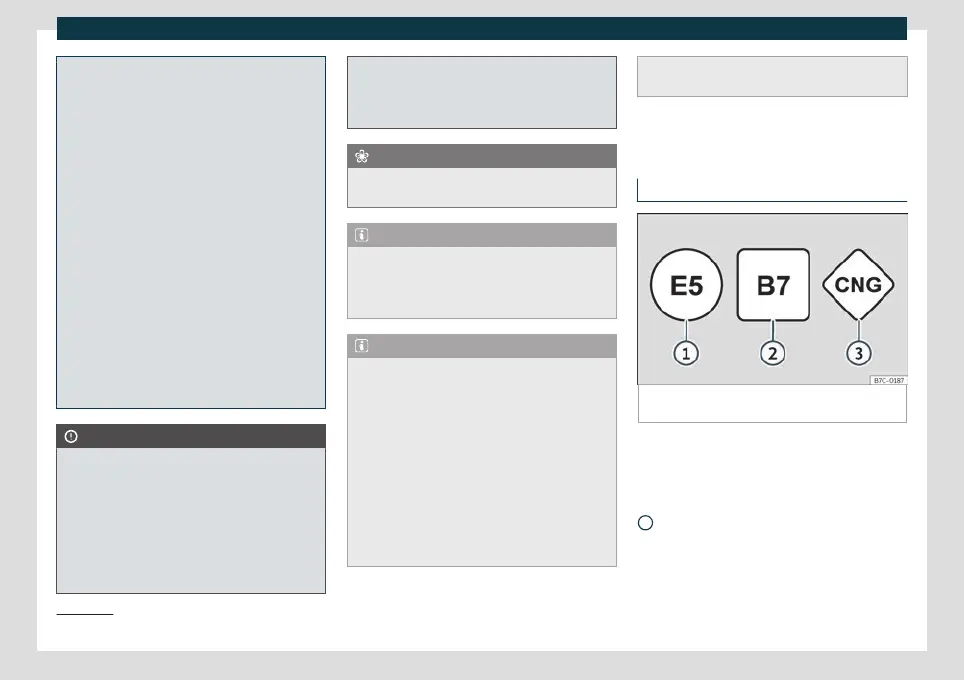Checking and refilling levels
In an accident the canister could be dam-
aged and could le
ak.
●
If, in exceptional circumstances, you have
to carry a spare fuel canister, please ob-
serve the following points:
–
Never fill fuel into the spare fuel canis-
ter if it is inside or on top of the vehicle.
This could cause an explosion. Always
place the canister on the ground to fill
it.
–
Insert the filling nozzle as far as possi-
ble into the spare fuel canister.
–
If the spare fuel canister is made of
metal, the filling nozzle must be in con-
tact with the canister during filling. This
helps prevent an electrostatic charge
building up.
–
Never spill fuel in the vehicle or in the
luggage compartment. Fuel vapour is
explosive. Risk of fatal accident!
CAUTION
●
If any fuel is spilt onto the vehicle, it
should be removed immediately. It could
otherwise damage the paintwork.
●
Never run the tank completely dry. The
catalytic converter can be damaged.
●
When filling the fuel tank after having run
it completely dry on a vehicle with a diesel
engine, the ignition must be switched on
for at least 30 seconds before starting the
engine. When you then st
art the engine it
may take longer than normal (up to one mi-
nute) to start firing.
For the sake of the environment
Do not overfill the fuel tank, it may cause
the fuel to overflow if it becomes warm.
Note
There is no emergency mechanism for the
manual release of the fuel tank flap. If nec-
essary, request assistance from specialised
personnel.
Note
Diesel vehicles are fitted with a protective
device that prevents the insertion of the
wrong fuel hose
1)
. It is only possible to re-
fuel with Diesel nozzles.
●
If the pump nozzle is worn, damaged, or if
it is very small, it is possible that it will not
be able to open the protective device. Be-
fore trying to insert the pump nozzle by
turning it, try a different pump or request
specialist help.
●
If you fill the tank from a reserve fuel can-
ister, the protective device will not open.
One way to resolve this is to pour the fuel in
very slo
wly.
Fuel types
Identification of fuels
1)
Fig. 198
Identification of fuels according to Euro-
pean Union (EU) Directive 2014/94/
Fuels are identified by different symbols on
the pump and on y
our v
ehicle's tank flap.
The identification serves to prevent confu-
sion when choosing the fuel.
Petrol with ethanol (“E” stands for Etha-
nol). The number indicates the percent-
age of ethanol in the petrol. “E5” means,
for example, an ethanol ratio of 5% max.
»
1
1)
Depending on country
313

